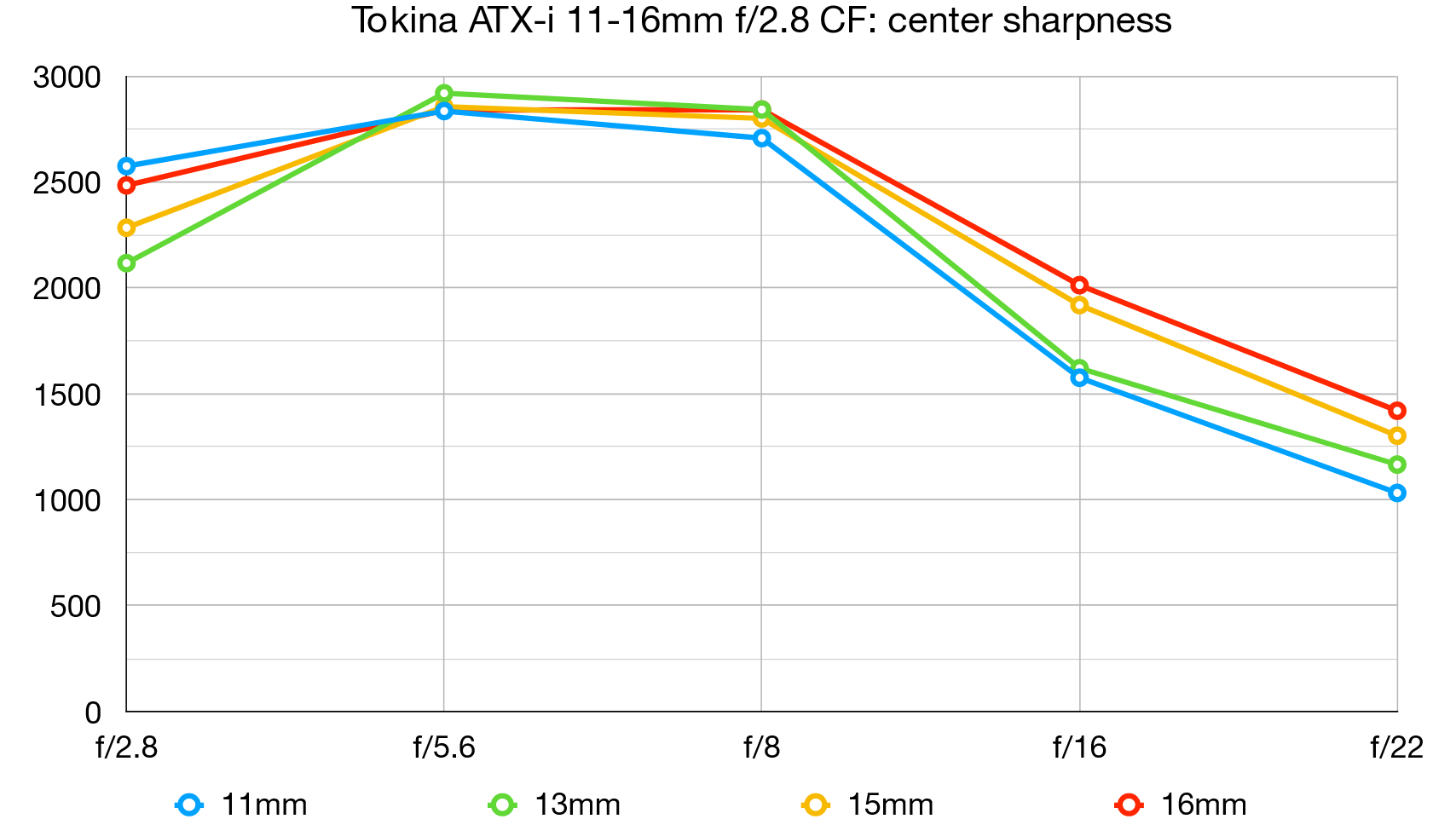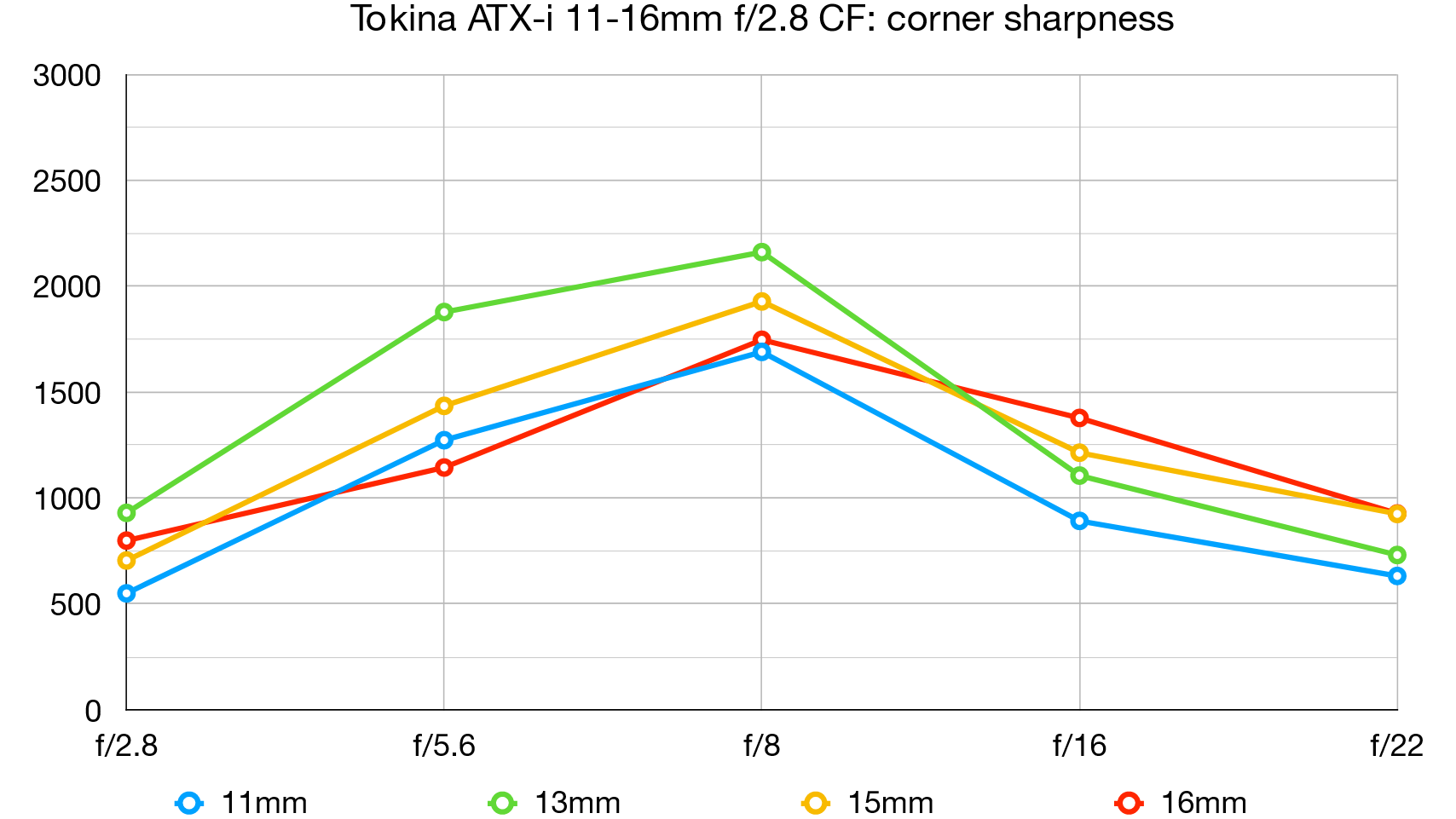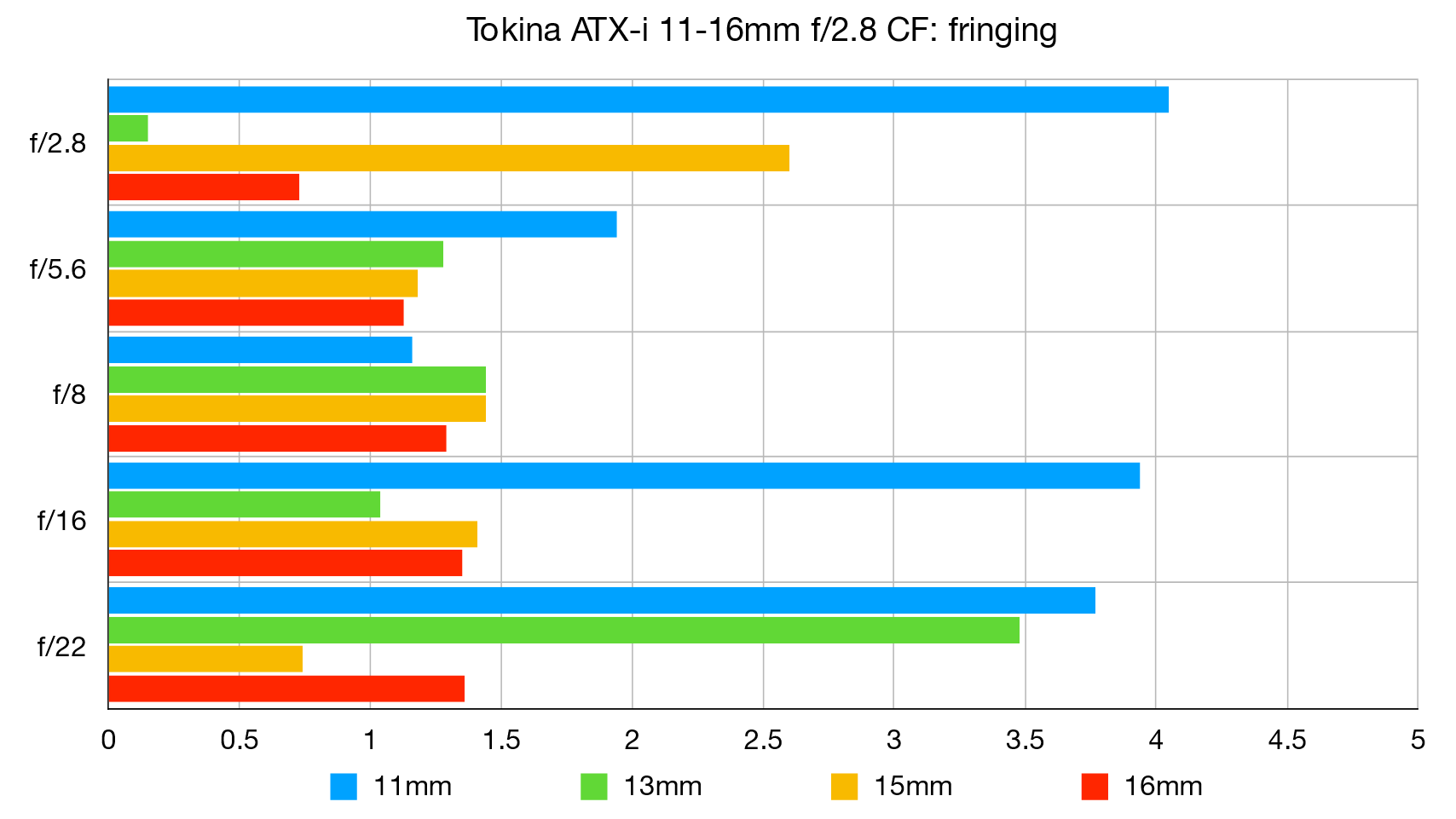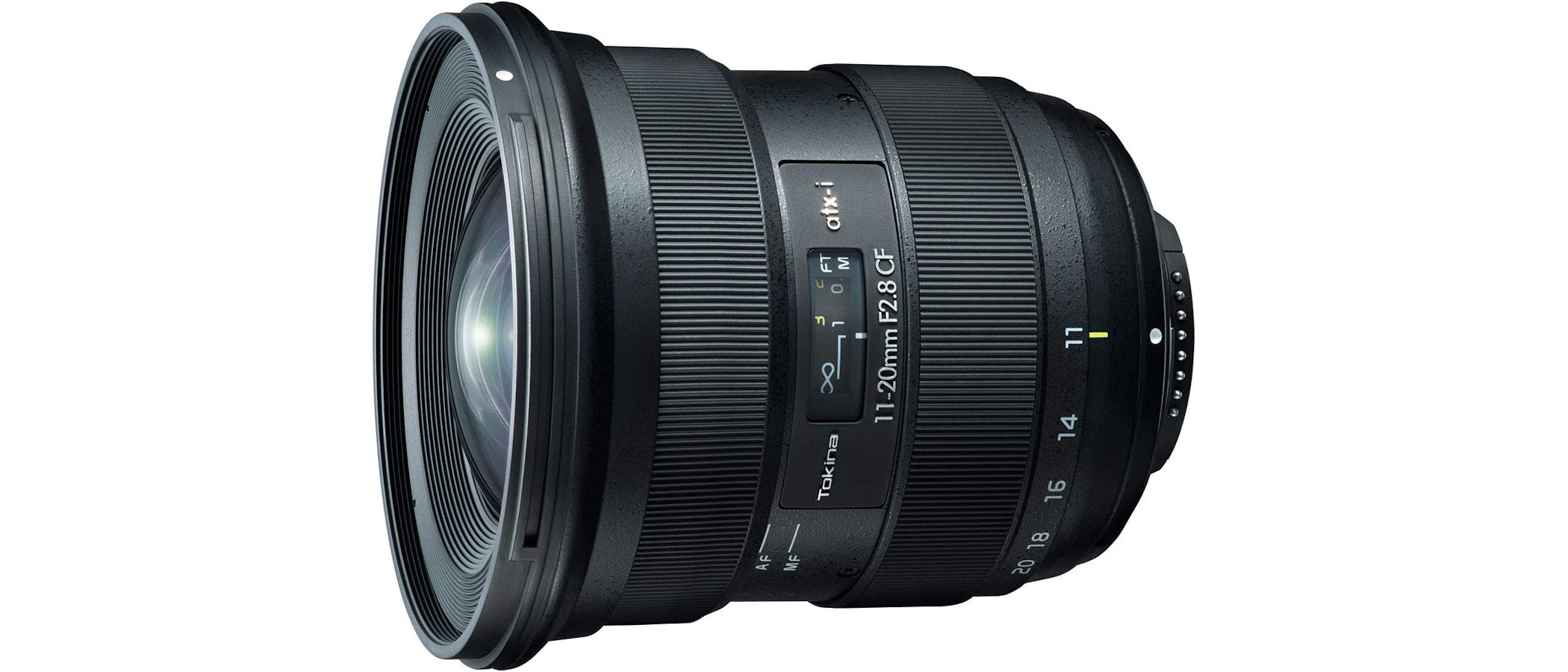Digital Camera World Verdict
The first edition of this lens quickly made a name for itself as the only f/2.8 ultra-wide-angle zoom for Canon and Nikon DSLRs. The Mark II added an internal autofocus motor in the Nikon mount option, whereas this was previously only featured in the Canon edition, and the relatively recent ATX-i (interactive) version gets a cosmetic makeover, aiming to more closely match modern DSLRs. The f/2.8 constant aperture is the main selling point, backed up by sharp image quality and strong build quality, but the outright zoom range can feel a little restrictive.
Pros
- +
Fast and constant f/2.8 aperture
- +
Good center-sharpness
- +
Strong build quality
Cons
- -
Noticeable fringing and distortion
- -
Push-pull focus ring
Why you can trust Digital Camera World
Designed for Canon and Nikon APS-C format DSLRs, the original ‘ATX’ edition of the Tokina ATX-i 11-16mm f/2.8 CF was launched back in 2008, quickly finding favor as an ultra-wide-angle zoom with a fast and constant f/2.8 aperture. A Mark II edition followed with revamped coatings and, more importantly, an internal autofocus motor in the Nikon as well as the Canon mount version, enabling autofocus with cameras like the Nikon D3xxx and D5xxx series, which lack an in-body AF motor. The latest ATX-i model takes its place in Tokina’s relatively new ‘Interactive’ line-up but real differences are hard to spot.
Specifications
Mount: Canon EF, Nikon F
Full frame: No
Autofocus: Yes
Image stablization: No
Lens construction: 13 elements in 11 groups
Angle of view: 104 to 82mm
Diaphragm blades: 9
Minimum aperture: f/22
Minimum focusing distance: 0.3m
Maximum magnification ratio: 0.09x
Filter size: 77mm
Dimensions: 84x89mm
Weight: 555g
Key features

Compared with the majority of 10-20mm and 10-24mm ultra-wide-zooms for APS-C format DSLRs, the Tokina has a more modest 1.45x zoom range, the minimum and maximum focal lengths looking comparatively restrictive. On Nikon cameras, you get an ‘effective’ range of 16.5-24mm, whereas for Canon it equates to 17.6-25.6mm
The optical line-up includes one larger-diameter molded aspherical element plus a further aspherical element, as well as two SD (Super-low Dispersion) elements. As an APS-C format lens, one thing that sets it apart from the competition is its f/2.8 widest aperture, which remains constant throughout the zoom range.
Typical of Tokina lenses, the ATX-i edition retains the company’s trademark One-Touch Focus Clutch Mechanism. This enables you to swap between autofocus and manual focus modes simply by snapping the focus ring forwards or backwards respectively. Some love it, some hate it, finding it all too easy to unintentionally switch between focus modes by accident while handling the lens. On the plus side, the lens features a fairly fast and quiet autofocus system with a focus distance scale beneath a viewing window.
The lens is pretty compact and lightweight for an ultra-wide-angle zoom with an f/2.8 aperture. Build quality feels solid and the lens comes with a separate bayonet-fit, petal-shaped hood. The avoidance of an integral hood enables the inclusion of a 77mm filter attachment thread.
Performance
Sharpness is exemplary in the central region of the frame even when shooting wide-open at f/2.8, although it pays to stop down a little if you want really good edge-to-edge sharpness. Color fringing can be very noticeable when using wide apertures at the short end of the zoom range, and again around the 15mm mark. Barrel distortion can also be an issue in the shorter half of the zoom range but, overall, performance and image quality are very convincing.
Lab results
We run a range of lab tests under controlled conditions, using the Imatest Master testing suite. Photos of test charts are taken across the range of apertures and zooms (where available), then analyzed for sharpness, distortion and chromatic aberrations.
We use Imatest SFR (spatial frequency response) charts and analysis software to plot lens resolution at the center of the image frame, corners and mid-point distances, across the range of aperture settings and, with zoom lenses, at four different focal lengths. The tests also measure distortion and color fringing (chromatic aberration).
Sharpness:


Levels of center-sharpness are excellent at all focal lengths, even when using the widest aperture of f/2.8. Edge-sharpness is comparatively disappointing unless you stop down a little, especially at the short end of the zoom range.
Fringing:

There’s generally not much color fringing but it can be very noticeable when shooting at the short end of the zoom range at wide apertures, and again at 15mm when shooting wide-open at f/2.8.
Distortion:

Barrel distortion can be quite noticeable in the shorter half of the zoom range and still apparent in the longer half.
Verdict
The first edition of this lens quickly made a name for itself as the only f/2.8 ultra-wide-angle zoom for Canon and Nikon DSLRs. The Mark II added an internal autofocus motor in the Nikon mount option, whereas this was previously only featured in the Canon edition, and the relatively recent ATX-i (interactive) version gets a cosmetic makeover, aiming to more closely match modern DSLRs. The f/2.8 constant aperture is the main selling point, backed up by sharp image quality and strong build quality, but the outright zoom range can feel a little restrictive.
Read more:
• Best camera lenses to get
• Best Canon lenses
• Best Nikon lenses
• Best Sony lenses
Matthew Richards is a photographer and journalist who has spent years using and reviewing all manner of photo gear. He is Digital Camera World's principal lens reviewer – and has tested more primes and zooms than most people have had hot dinners!
His expertise with equipment doesn’t end there, though. He is also an encyclopedia when it comes to all manner of cameras, camera holsters and bags, flashguns, tripods and heads, printers, papers and inks, and just about anything imaging-related.
In an earlier life he was a broadcast engineer at the BBC, as well as a former editor of PC Guide.


